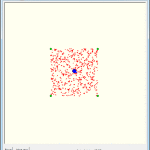Human Eye
The human eye can readily adapt to light levels from at least .03 F/C (full
moon, no other illumination) for scotopic vision (rods), to 15,000 F/C
(bright daylight in snow) for photopic vision (cones).
I’m not sure how that would translate into ASA and f-stop.
Detectable refresh rate (temporal frequency) varies between 40 and 80 hz
(depending on the lighting ratio of source to ambient light). The eye can
detect flickering (temporal separation) of equal intensity light sources at
intervals as low as 15-20 ms.
Finally, resolution is between 50 and 60 cyc/deg. in bright light, but that
number has a lot of qualifiers that I won’t go into. (Our hearing is limited
to 20-20K hz, but the brain can detect missing harmonics at much higher
frequencies.)






Leave a Reply